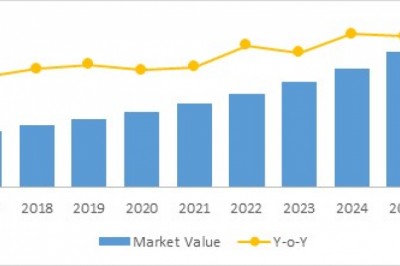views

No decision should be made without appropriate research and data, so here are the top e-commerce statistics for 2021 that will hopefully help you make informed development decisions.
Online sales account for 22.3 percent of total retail sales
22.3 percent may not seem like a huge figure. It is significant, however, when compared to global e-commerce sales from just five years ago. In 2016, only 8.5 percent of total sales were made online. That’s an increase of around 130 percent over a relatively short time frame.
There’s no doubt that the Covid-19 pandemic fuelled some of this growth. As more people discover the ease and convenience of online shopping, you can only expect the industry to expand even further over the coming decade.
Mobile shopping accounts for 72.9 percent of all online purchases
It’s well at truly the small screen’s time to shine. Mobile purchases now account for a whooping 72.9 percent of all online transactions. This has several consequences for those involved in e-commerce web development.
To start with, you need to make sure that your site is responsive. That means that the design and interface will automatically adapt themselves to suit the size of your device's screen. Failure to use responsive design will result in a negative user experience and possible SEO penalties.
If you know that the majority of your consumer base prefers to shop on a mobile, you could also consider building an Android or iOS app. Apps are another avenue through which you can increase your digital presence and attract new customers.
Free shipping is always a good idea
51.1 percent of consumers indicated that free shipping is one of the top factors that dictate whether or not they make a purchase online. Now, not all businesses can afford to offer free shipping. But this statistic does point to the fact that online shoppers are always looking for coupon codes and other specials to sweeten the deal.
If you run an online store, be sure to make it visually obvious when you’re having a sale. Clearly indicate where users can enter voucher codes and use digital marketing tools (email and social media) to advertise promotions.
Your online reputation matters
The rise of social media has made it easy for people to share their favourite websites and online stores with friends and family. Unfortunately, the flip side of this is that it is equally as easy for disgruntled consumers to speak out about products and services they are not impressed with.
93 percent of online shoppers say that reviews influence their purchasing choices. You can’t always control reviews on third party sites. But, you can make it easier for customers to do their research by including a mix of positive, neutral, and perhaps even a few negative comments on your website. Reviews add legitimacy to your online store and help customers make informed decisions.
Look online before you buy
Even if the majority of your sales come from your physical store, it’s likely that your customers have done their research online before stepping through your doors. 46 percent of retail consumers confirm inventory online before going in-store.
For those who are running an e-commerce store, this indicates how important it is to have up to date information on your site. If stock levels are wrong, you’re creating a poor user experience both online and in store.
The challenge lies in conversion
It’s not all good news in the land of e-commerce. Average conversion rates across all e-commerce stores in 2021 are approximately 1.81 percent, meaning very few visitors to your online store are likely to make a purchase.
With these kinds of numbers, the good news is that there’s a lot of room for improvement. To start with, consider working with a web development services team to map your user journey. Check how simple (or difficult) it is to get from locating a product to completing your purchase. Use UI testing tools (like a heatmap) to see where consumers are getting stuck or choosing to exit your site.
This kind of data can be incredibly valuable in converting potential customers to real sales.
There’s no doubt about it; e-commerce is here to stay. Keep an eye on consumer trends and statistics to see how you can best capitalise on this burgeoning market.












